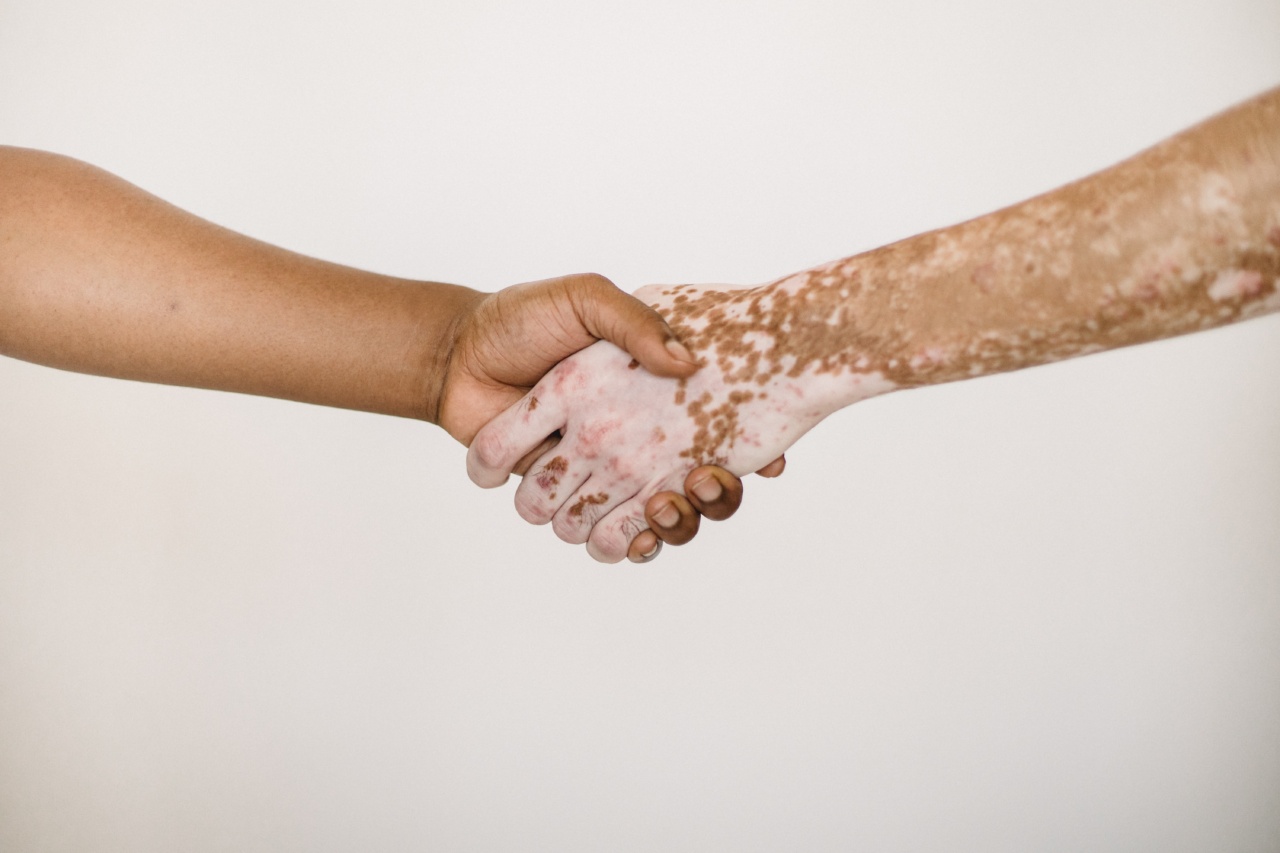Psoriasis and wolf are two skin conditions that can cause discomfort and distress. While they have different causes and symptoms, they share some similarities.
Understanding the signs of psoriasis and wolf is crucial for early detection and appropriate treatment. In this article, we will explore the distinguishing characteristics of these conditions and how to differentiate between them.
What is Psoriasis?
Psoriasis is a chronic autoimmune disease that primarily affects the skin. It occurs when the immune system mistakenly attacks healthy skin cells, causing them to multiply rapidly.
This rapid cell turnover results in the formation of red, scaly patches known as plaques.
The Signs of Psoriasis
Psoriasis can manifest in different ways, but the most common signs and symptoms include:.
- Red and inflamed skin: Affected areas often appear red, slightly raised, and inflamed. The redness may range from a bright pink to deep red color.
- Thick, silvery scales: The plaques formed in psoriasis are characterized by silver-white scales that can be easily scraped off. The presence of scales is a key differentiating factor from other skin conditions.
- Itching and pain: Psoriasis can cause intense itching, burning, and discomfort. Scratching the affected areas can worsen the condition and lead to secondary infections.
- Dry and cracked skin: The constant shedding of skin cells in psoriasis can lead to dryness and cracking of the affected areas.
- Pitting of nails: Psoriasis can affect the nails, leading to pitting, ridges, and discoloration. In severe cases, nail detachment may occur.
- Joint swelling and pain: Some individuals with psoriasis develop a condition known as psoriatic arthritis, which causes joint inflammation and pain.
What is Wolf?
Wolf, also known as lupus erythematosus, is a chronic autoimmune disease that can affect various parts of the body, including the skin. There are two main types of lupus: discoid lupus erythematosus (DLE) and systemic lupus erythematosus (SLE).
The Signs of Wolf
The signs and symptoms of wolf can vary depending on the type and severity of the condition. However, some common indicators include:.
- Butterfly rash: One of the hallmarks of lupus is a distinctive rash across the cheeks and bridge of the nose, often resembling a butterfly shape.
- Photosensitivity: Individuals with lupus may experience increased sensitivity to sunlight, leading to rashes and skin lesions when exposed to UV rays.
- Oral and nasal ulcers: Mouth sores and ulcers can develop in people with lupus, causing pain and discomfort.
- Hair loss: Lupus can lead to hair thinning and significant hair loss in some individuals.
- Raynaud’s phenomenon: Some people with lupus may experience a condition called Raynaud’s phenomenon, where fingers and toes become numb and cold in response to cold temperatures or stress.
- Joint pain and swelling: Lupus can cause inflammation and pain in the joints, similar to the symptoms of psoriatic arthritis.
- General fatigue and malaise: Many individuals with lupus experience extreme tiredness, weakness, and a general feeling of being unwell.
Differentiating Between Psoriasis and Wolf
While psoriasis and wolf share some common symptoms, there are distinctive features that can help differentiate between these two conditions.
1. Symmetrical distribution:
Psoriasis often appears on both sides of the body, whereas lupus rashes may be asymmetrical.
2. Scale removal:
In psoriasis, the scales are easily scraped off, whereas lupus lesions typically do not have scales.
3. Photosensitivity:
Lupus rashes tend to worsen with sun exposure, while psoriasis plaques are usually unaffected by sunlight.
4. Joint involvement:
Psoriatic arthritis is more commonly associated with psoriasis, although joint pain and swelling can occur in lupus as well.
Seeking Medical Attention
If you notice any concerning skin changes or experience persistent symptoms such as rashes, scales, or joint pain, it is important to consult a healthcare professional.
Only a medical expert can provide a proper diagnosis and recommend appropriate treatment options.
Treatment Options
While there is no cure for either psoriasis or lupus, various treatment options can help manage the symptoms and improve quality of life. Treatment methods may include:.
- Topical medications: Creams, ointments, and lotions containing corticosteroids, retinoids, or vitamin D analogues can help reduce inflammation and promote healing.
- Phototherapy: Controlled exposure to ultraviolet light can slow down the excessive skin cell turnover and alleviate symptoms.
- Systemic medications: In more severe cases, oral or injectable medications may be prescribed to target the underlying immune dysfunction.
- Immunosuppressants: Medications that suppress the immune system can be used to manage both psoriasis and lupus.
- Nonsteroidal anti-inflammatory drugs (NSAIDs): These medications can help relieve joint pain and swelling associated with psoriatic arthritis and lupus.
Conclusion
Psoriasis and lupus are chronic autoimmune diseases that can affect the skin and cause significant discomfort. While psoriasis primarily manifests as red, scaly plaques, lupus rashes often have a butterfly-shaped pattern across the face.
Identifying the distinguishing signs and symptoms of these conditions is crucial for early detection and appropriate treatment. If you suspect you may have either psoriasis or lupus, it is essential to consult a healthcare professional for an accurate diagnosis and personalized treatment plan.



























